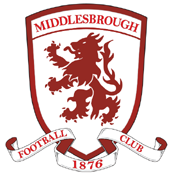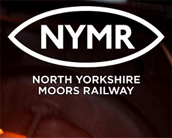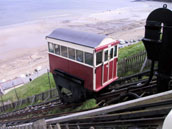Middlesbrough
Middlesbrough was a small hamlet on the south side of the river Tees, with a population in (1829) of just 40. By the end of the (19th) Century it had become a city of 91,000.
The turning point in Middlesbrough's history was the purchase of 500 acres of the original Middlesbrough estate by five Quaker gentlemen, led by Joseph Pease. They planned to create a town of 5000 with a port to allow shipment of coal from the South Durham collieries to London and other markets. New quays were built, in deeper water, and nearer the sea than the old staiths at Stockton. The Stockton and Darlington Railway was extended to the new site which, at the time, was known as Port Darlington. Pease quickly realised the potential of the site for further development. A subsidiary company was set up to develop the land, and they commissioned Richard Otley to plan the town. The first house was built in West Street in April 1830. Within 10 years, annual coal exports increased from estimated 10,000 tons to 1.5m tons. By 1841, the population of Middlesbrough stood at 5,463. The first parish church, St. Hilda's had been constructed, along with a market and a new dock had been cut into the Tees. A firm of Ironworkers, Bolckow and Vaughan had also opened a foundry.
Though initially successful, Middlesbrough's coal-exporting trade suffered a marked decline as the new network of railways proved able to move coal more efficiently than by Port Darlington's seaward route. However, the discovery of iron ore at Eston and in the Cleveland Hills, coupled with the recognition of its usability by Vaughan converted Middlesbrough almost overnight from a coal town to an iron town. Situated on a navigable river with both coalfields and ironstone within easy reach, no town could have been more favourably located for an iron making centre.
When the first blast furnace came into operation in 1851, 3000 tons of ironstone were processed daily. By 1861, there were over 40 furnaces in the district, with an annual output of 500,000 tons of pig-iron. The population at this time stood at 18,892, and by 1871, swollen by the influx of ironworkers from Durham, Staffordshire, Scotland and South Wales was 39,284.
The phenomenal growth was accompanied by a chaotic rush of (inferior) house building, with rows of terraces being sandwiched between the back gardens of existing houses. As its population and industrial success grew, the grid iron pattern of streets and municipal buildings spread south until the new Town Hall and Railway Station, built in 1887 and 1877 respectively, were no longer in the central position as originally planned.
The self-contained production of pig-iron began to fade after the 1870s, when steel and foreign competition cast a shadow over the ironmaster's world. Iron was henceforth not being used for railroads, though was still in demand by the shipbuilding industry. Iron, however, remained dominant on Teeside until the late 1870s when the process of making steel from phosphoric iron ore (as found here) was successfully demonstrated at Bolckow-Vaughan's works in 1879. By the end of the century, Dorman and Long had appeared. They took advantage of the rising tide of steel and also pursued some mergers and acquisitions.
There were other industries. The Middlesbrough Pottery Company was founded in 1834 and was in production until 1857. Shipyards sprang up, namely Harkness, Dixons, Rake Kimber and J G Holmes. Industry associated with the Cleveland Docks were developed, and later salt and chemical production came into being.
In the 20th Century, the transport network was developed, with two bridges over the Tees being built. The first was the now synonymous Transporter Bridge (1911), and later, in 1934, the Newport Bridge. The Dorman museum was opened in 1904, and the library in 1912. Growth ceased during the Second World War, following the 1930s slump. After the war, housing was thinned, new suburbs were built, and much of the industrial blight ameliorated. Much of the current townscape dates from this postwar period.
Life of an Ironworker, circa 1900
Ironworkers started work from about the age of sixteen. At their peak strength (age 20-40), they would be employed in the most physically demanding tasks, which would attract the most pay. As their strength declined, they would be shifted to lesser tasks, and paradoxically (by comparison to modern customs) their pay would decrease, as it was linked solely to their exertions, and not to experience.
The environment they worked in was grim, with heavy air pollution, extreme heat and cold, and continuous noise. The Ironworks were a place of great danger, where accidents involving heavy machinery, or molten iron would generally be serious. Men would typically work 8 hours shifts, either 6am to 2pm, 2pm to 10pm or 10pm to 6am. The Ironworks would never close, not even on Sundays as the startup costs of the furnaces were too great.
The table below lists and describes the various trades that would be found at an ironworks. Wage figures have been extracted from At the Works by Lady Florence Bell, wife of Hugh Bell, Ironfounder. This book, published in 1907, gives a detailed insight into the life of families associated with the Iron industry.
| Trade | Job Description | Max Weekly Wage |
|---|---|---|
| Furnace Keeper | Responsible for keeping the furnace in top working order. This is one of the most responsible posts at the works. | £3 0s |
| Slagger | ||
| Charger | Take barrows of calcined ironstone (6), limestone (3) and coke (6) from the lift at top of the blast furnace to the hopper where the charge is emptied. The ratios 3-6-6 constitute the charge. When the charge is complete, the bell is lowered, and the contents fall into the blast furnace. At this point, a sudden jet of vivid flame is produced at the top of the furnace. | £2 0s |
| Minefiller | Takes barrows of calcined ironstone from the kiln, via the weighman, to the lift at the bottom of the blast furnace at a rate of 10-12 barrows per hour. | £2 2s |
| Brakesman | Operated brakes on trains or trams | |
| Weighman | Weighs the barrows of calcined ironstone. Job normally filled by the older men, who are obliged to accept lighter work as their strength diminishes. | £1 0s |
| Coke-Tipper | ||
| Helper | ||
| Slag-Tipper | ||
| Gantryman | Works on high platform along which trucks of ore, coal, cokes and limestone arrive. He stands on the platform above the kiln, and feeds the coal into the kiln from which the ironstone has already been tipped, using his judgement as to how much is added. | £2 12s 6d |
| Scarrer | Breaks up fused ironstone that can block the eye at the bottom of the kiln through which the calcined ironstone is normally drawn out. The scarrer does this by thrusting a bar into the eye of the kiln. | £2 0s 6d |
| Metal Carrier | Moves the cooled pigs (iron ingots weighing about 55kg) by hand onto trucks. | |
| Boilerman | ||
| Engineman | ||
| Pump Tender | ||
| Crane Tender | ||
| Stove Tender | ||
| Labourer | £1 3s | |
| Joiner | ||
| Moulder | Makes moulds for casting iron. | |
| Pattern Maker | Makes wood patterns for the construction of steel or other metal objects. eg. Patterns are made for ship construction, for castings etc. | |
| Sailor Fitter |




 If you would like to place an advert on this site, then click
If you would like to place an advert on this site, then click 


